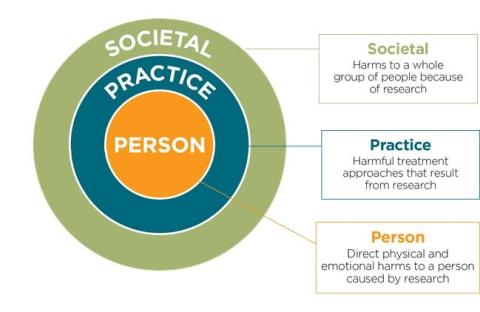
Know about and work to prevent harms in IDD-MH research & practice
All aspects of research must have meaningful involvement of persons with IDD-MH and their families
When people use their individual strengths, the team is stronger as a whole
- Leadership team
- Truth & Reconciliation co-facilitator teams

What is Truth & Reconciliation?

Truth & Reconciliation is a process of restoration among groups that have experienced harms, and where such harms have not often been acknowledged. Truth & Reconciliation focuses on honesty, owning up to the truth of these injustices and harms, and engaging in a process to repair, rebuild, and restore broken relationships. In the IDD-MH context, Truth and Reconciliation means young adults with IDD-MH, families, and researchers work together to make things better and build a relationship based on trust.
There is no one way to engage in a process of Truth & Reconciliation. Almost all Truth & Reconciliation processes have four parts including:
- Truth telling
- Acknowledging
- Restoring
- Collaborating
#1 Truth Telling
Truth telling is the first step towards reconciliation. It was important to admit harmful past and present research practices, and how they affected people with IDD-MH, practices, and society.
In this video, a member of our leadership team, Joan B. Beasley, describes the structure of harms.

#2 Acknowledging
Acknowledging is the second step in Truth and Reconciliation. This involved offering an apology to young adults with IDD-MH and their families that they deserved. It involved asking young adults with IDD-MH and their families to join researchers to create a different future.
In this video, IDD-MH researchers, including members of our leadership team, provide an apology.
#3 Restoring
Restoring is the third step of reconciliation. Restoring emphasized learning from past problems and making sure that there are policies and practices that make future research safe and inclusive for persons with IDD-MH.
In this video, a member of our leadership team gives an example of moving from harms to restoration in research.
#4 Collaborating
Collaborating is the fourth step towards reconciliation. We helped young adults with IDD-MH and their families understand the importance of research and how to participate as equal partners. To learn more, visit: How people with IDD-MH and families can get involved in research.
Researchers attending the Transforming Research Forums learned about the guiding principles for research collaboration:
